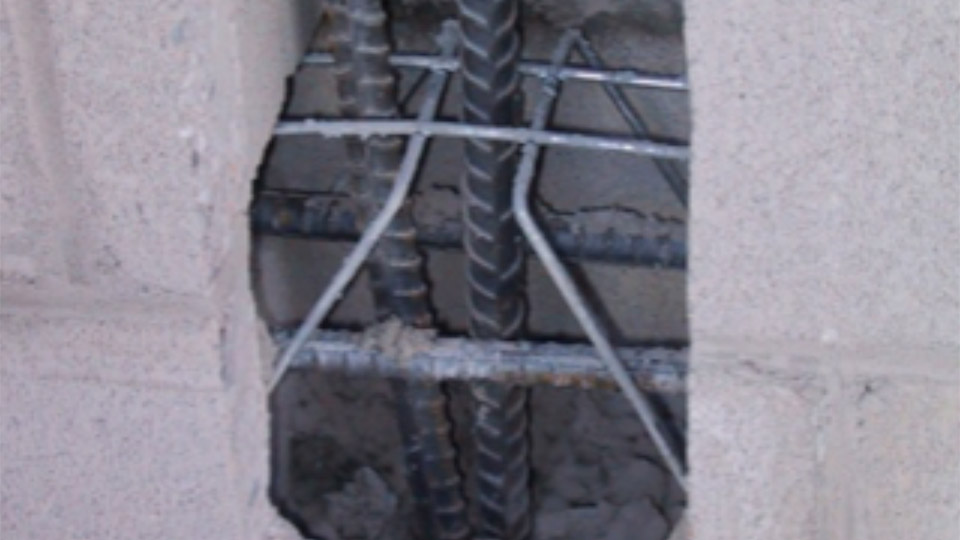
This cutaway view shows 2 vertical bars being held in place by a galvanized wire rebar positioner placed in the mortar joint. The bar positioner helps keeps the rebar from moving during grouting.